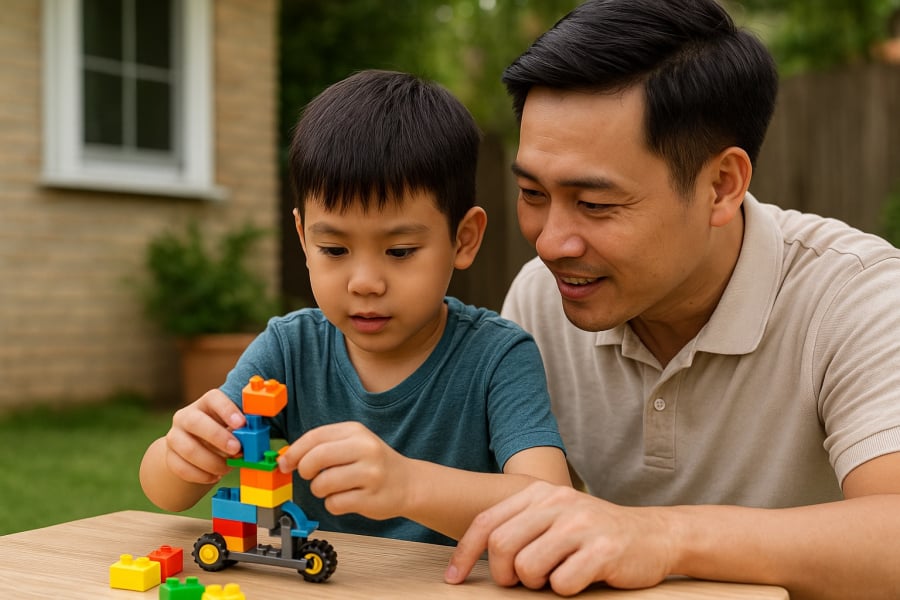Each Child is a Symphony of Influences
Some children bear a striking resemblance to their fathers: the way they walk tall and speak articulately, their decisive attitude. Others are emotionally intelligent, observant, and often quiet – mirroring their mothers’ every glance. But if you spend enough time with a child, you’ll realize that no resemblance is ever complete.
This is because children are not solely shaped by their genetic inheritance but also by thousands of observations, interactions, experiments, and reactions to their surroundings. We are not “cast in stone” at birth but are molded daily by minuscule details, such as the way we are hugged, scolded, waited for, or hurried along.
Within a family, there may be two or three children with the same parents and living conditions, yet each possesses a unique personality. This is not abnormal but a sign that children are independent beings – and parents are not meant to predetermine their path but rather accompany them on their journey of self-discovery.

Mother: The First World a Child Knows
In the early years, a mother is usually the primary caregiver. Her emotions, tone of voice, daily routines, and responses to challenges all leave an indelible mark on how a child perceives the world. Without explicit teaching, children absorb their mother’s temperament through her gestures and expressions.
If a mother is affectionate, communicates gently, and allows her child to express their emotions, her offspring are more likely to develop empathy and a gentle demeanor. Conversely, if a mother is often rushed, irritable, or authoritative, her children tend to emulate these reactions without being explicitly taught.
But as children grow, their world expands beyond the confines of their mother’s arms.
Father: Subtle Influences as Children Strive for Independence
When children begin to walk, talk, and venture beyond their mother’s embrace to explore, the father’s role becomes more apparent. Not because he teaches specific skills but because he often serves as the first model for navigating the world outside the home.
Fathers may take their children swimming, build tents in the backyard, or teach them how to use tools to fix a broken table. Through these seemingly mundane activities, children learn responsibility, problem-solving, and sometimes, how to cope with failure.
Interestingly, children who have a close bond with their fathers tend to be more adventurous. Not because their fathers are inherently superior, but because paternal interactions are often less emotionally charged and intrusive, providing space for self-expression. Whether boy or girl, every child needs these moments to forge their independent identity.

Children Become Themselves, Not Carbon Copies
We often overlook the multitude of influences beyond the parental figures, including schools, peers, neighbors, grandparents, teachers, and even social media, television, and literature. All these elements contribute to shaping a child’s character.
Some children, born into strict households, develop a deep sense of compassion. Others, raised in affluence, exhibit self-discipline and self-motivation. There are also those who don’t resemble anyone in their family but possess a strong sense of self-awareness, knowing their likes and needs.
This diversity is cause for celebration, as it signifies that children are constructing their inner worlds independently, unaffected by their parents’ identities, occupations, or expectations.
Don’t Predict, but Explore and Listen
Instead of fixating on whom a child resembles more, take a step back to observe and listen. Allow them to be themselves, even if it contradicts your habits, differs from your personality, or ventures beyond your comfort zone.
With patience and trust, each child will forge their unique path – one that doesn’t require leading but only accompaniment and acknowledgment.






























